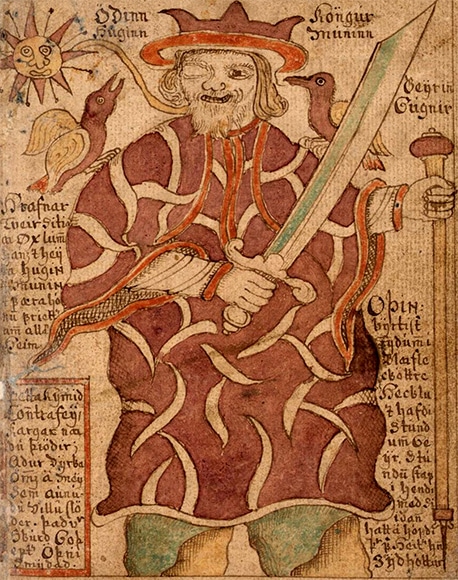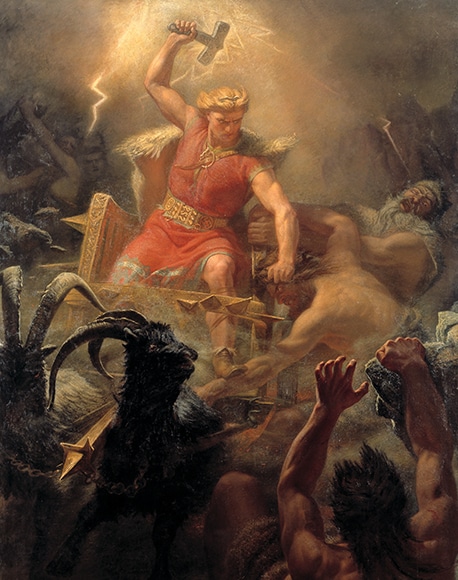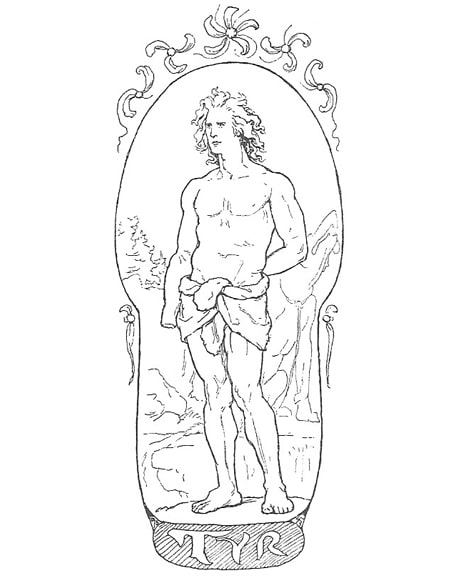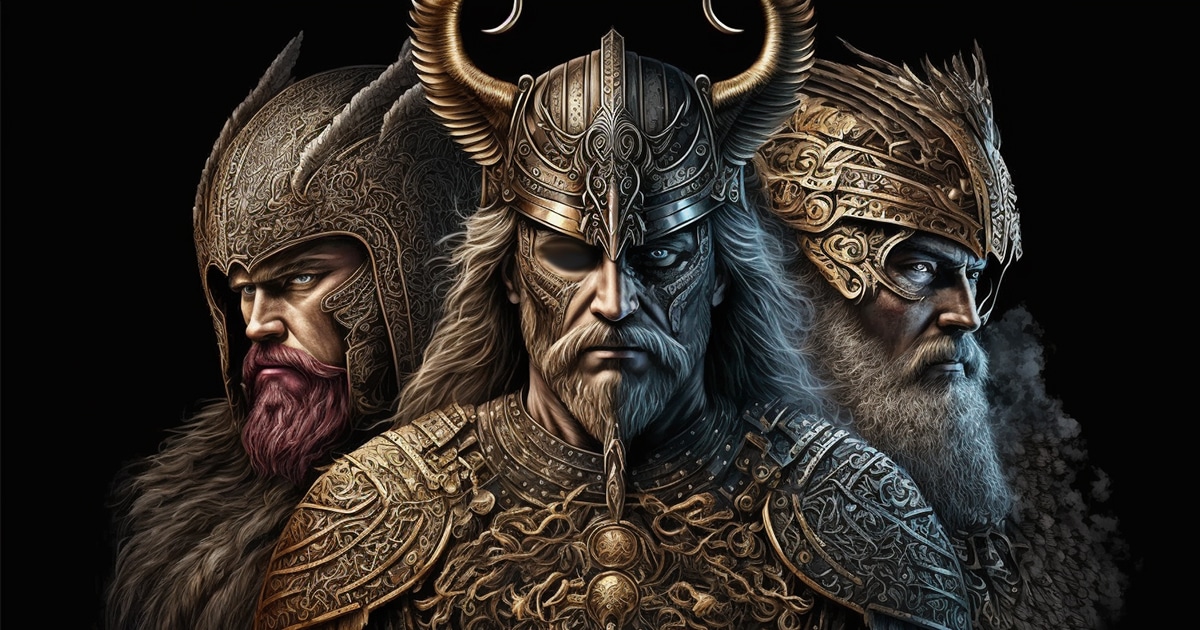Norse mythology is incredibly captivating – the gods are both deeply relatable and awe-inspiring. With personalities akin to humans they have been admired for thousands of years.
NORSE GODS: ODIN
Odin, the ruler of Asgard and the Aesir, is a captivating figure in Norse mythology. Known for his wisdom and knowledge, as well as being the father of many gods, Odin remains shrouded in mystery to this day. He is in many ways a self-absorbed character who does what he feels like and often goes on solitary journeys through the 9 realms in search of wisdom and knowledge. These are virtues that he exalts above more traditional values such as respect for ordinance and justice. He is a complex Norse god that spans between being a god of poetry and a god of war. The complexity of his nature and values is probably one of the reasons why he is so fascinating.
One of the most famous stories about Odin’s quest for wisdom is the story of his travel to Mimir’s well. He knew that drinking from the well would give him a portion of Mimir’s wisdom, but it was not as easy as it seemed. Mimir would allow Odin to drink from the well without a sacrifice. It ended up with Odin sacrificing one of his eyes to gain wisdom from Mimir. Another famous story about Odin’s search for knowledge was when he hung from Yggdrasil for nine days and nights without eating or drinking. This sacrifice gave him a complete understanding of the runes and the power and magic they possess. Odin was indeed the most perplexing Norse gods.

“Odin” – Icelandic Manuscript (18th century)

“Thor’s battle with the Giants”
Mårten Eskild Winge (1872)
NORSE GODS: THOR
Thor is possibly the most known of the Norse gods. He is the god of thunder and to the Norse and Germanic people, he embodied the ultimate hero, his loyalty and honor setting a shining example for all warriors to strive towards. He stands as a relentless champion, determined to protect the gods of Asgard and their home from the hostile giants. His unwavering spirit is an unshakable bulwark against any opposition they may face. In recent years he has been depicted as a goof character in numerous Marvel movies which is far from what we know about him. He enjoyed life and its goods but he was always serious about being a fierce and honorable warrior.
You can’t speak about Thor without mentioning Mjǫllnir. Thor’s hammer was much more than just a weapon of destruction – it could also be used to purify and cleanse. In fact, the two properties were intertwined as any sort of sanctification requires banishing that which is unwelcome or undesirable. Mjǫllnir‘s might is awe-inspiring, demonstrated most prominently by his remarkable power to bring life from death. By killing and eating the goats that drove his chariot, Mjǫllnir was able to resurrect them as if nothing had occurred. The only rule that Thor had when letting others feast on his goats was that nobody sucked out the bone marrow.
NORSE GODS: TÝR
Týr is an influential Norse deity, revered for his mastery over warfare and law. He was also the god who served as a moral compass in times of justice and turmoil. Despite his diminished role in Viking Age mythologies, Tyr was formerly one of the most revered gods among Norse and Germanic tribes, but evidence suggests that he slowly slipped into a state of anonymity by the end of this period.
In sharp contrast to his ferocious reputation as a war god, Tyr has an equally important role in upholding the laws of justice. He is seen not only as a protector and enforcer but also as one who requires that all abide by fair rules when settling different types of conflicts.
Tyr is maybe best known for the binding of the Fenris wolf. Fenris, the legendary monster wolf in Norse mythology, was born from giantess Angrboda and Loki. Though he started out as a pup, his strength quickly grew which caused fear among the gods who knew of Fenris’s impending destructive prophecy.
To prevent this from occurring, they sought ways to contain him – eventually coming up with binding fetters. When presented with them, Fenris refused unless one god would volunteer by placing an arm into his mouth as assurance that no harm will come upon him once caged within these chains. Tyr accepted resulting in him losing an arm to Fenris.

“Týr” – Lorenz Frølich (1895)
THE NORSE GODS IN RAGNARÖK
Ragnarök is the ultimate destruction of all that exists, even the gods themselves. It’s an apocalyptic event no one will survive and spells certain doom for anyone caught in its wake. All of the gods have different roles to play when Ragnarök unfolds. On the battlefield of Ragnarök, Odin will join forces with his glorious einherjar: a host of chosen humans who follow him into battle. Valor and courage are abundant on this fateful day as they fight together against Fenrir – yet nothing can defy ultimate fate; in the end, Ragnarök brings about an epic clash that neither side could have anticipated. By twilight’s light, even brave Odin stands no chance against Fenrir and must succumb to its appetite along with all his heroic warriors.
After centuries of animosity, the mighty Thor and Jormungand will finally face off in a grand battle to end all battles. Using sheer strength and determination, Thor manages to slay his deadly opponent with an almighty hammer strike – yet is cursed by its venomous bite that leaves him taking nine fateful steps before meeting his demise. Tyr will emerge as both victorious and defeated when he goes up against Garmr. In Grímnismál, Garmr is described as a dog but in Voluspa, the term Freki (wolf) is used. That raises the question if Garmr is in fact the Fenris wolf. Since Odin is fighting Fenris it seems unlikely that it goes up against Tyr under another name. If it was truly Fenris why not just say so? Nevertheless, Tyr meets his fate too.
